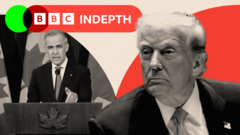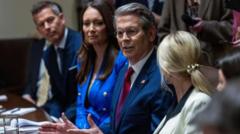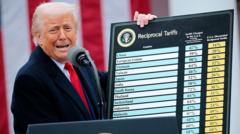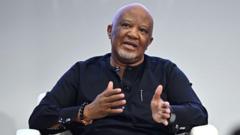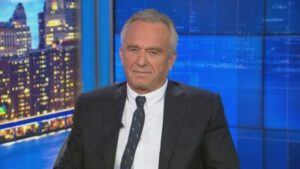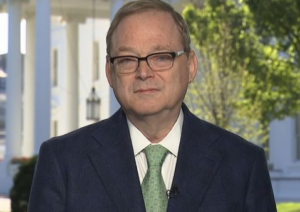In a surprising policy shift, President Trump has temporarily paused higher tariffs for several countries while simultaneously escalating tariffs on Chinese goods to 125%.
Trump Temporarily Eases Tariffs Amid Escalating China Trade War
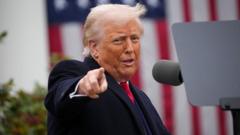
Trump Temporarily Eases Tariffs Amid Escalating China Trade War
President Trump's recent tariff decisions illustrate a complex balancing act amidst intensifying trade tensions with China.
In a recent announcement, President Donald Trump declared a temporary 90-day pause on heightened tariffs that were set to affect approximately 60 countries, just hours after their implementation. Concurrently, he announced an increase in tariffs on imports from China to 125%, following Beijing's decision to impose its own retaliatory tariffs of 84% on US goods. This move signals a significant escalation in the ongoing trade war between the two largest economies in the world and follows a series of aggressive tariff measures introduced by the Trump administration.
Trump's new tariff strategy establishes a baseline rate of 10% on all imports while designating certain countries as "worst offenders" based on what Trump describes as unfair trade practices. Countries such as the European Union, Vietnam, and South Africa have found themselves on this list, leading to heightened tensions. Market reactions were immediate, with a notable sell-off in global markets following last week's announcement of tariffs, leading to trillions in losses and growing concerns about potential economic recession.
Prior to Trump's announcement to pause higher tariffs, US Treasury interest rates surged to 4.5%, marking the highest levels since February, illustrating the strain on the economy. Markets responded positively to the news of the tariff pause, with the S&P 500 climbing by 7% in afternoon trading.
Despite Trump’s assertion that this policy recalibration was not a response to market fluctuations, Democratic Senator Chuck Schumer characterized the change as an indication that Trump is "reeling and retreating" in the face of mounting pressure. The trade stand-off reached new heights last week when Trump initially announced sweeping tariffs, which were then seemingly moderated in an attempt to renegotiate with over 75 nations seeking trade resolutions.
However, the situation with China remains taut. China, facing an additional 34% tariff on top of an earlier 20% levy, remained steadfast in its resolve to retaliate, promising to "fight to the end" if provoked further. China's foreign ministry criticized the US's approach as "abusive," advocating for an attitude of equality and mutual respect in negotiations.
The situation remains fluid, as both countries continue to explore additional avenues for negotiation amidst the backdrop of significant economic implications for both nations and their global trade relationships.
Trump's new tariff strategy establishes a baseline rate of 10% on all imports while designating certain countries as "worst offenders" based on what Trump describes as unfair trade practices. Countries such as the European Union, Vietnam, and South Africa have found themselves on this list, leading to heightened tensions. Market reactions were immediate, with a notable sell-off in global markets following last week's announcement of tariffs, leading to trillions in losses and growing concerns about potential economic recession.
Prior to Trump's announcement to pause higher tariffs, US Treasury interest rates surged to 4.5%, marking the highest levels since February, illustrating the strain on the economy. Markets responded positively to the news of the tariff pause, with the S&P 500 climbing by 7% in afternoon trading.
Despite Trump’s assertion that this policy recalibration was not a response to market fluctuations, Democratic Senator Chuck Schumer characterized the change as an indication that Trump is "reeling and retreating" in the face of mounting pressure. The trade stand-off reached new heights last week when Trump initially announced sweeping tariffs, which were then seemingly moderated in an attempt to renegotiate with over 75 nations seeking trade resolutions.
However, the situation with China remains taut. China, facing an additional 34% tariff on top of an earlier 20% levy, remained steadfast in its resolve to retaliate, promising to "fight to the end" if provoked further. China's foreign ministry criticized the US's approach as "abusive," advocating for an attitude of equality and mutual respect in negotiations.
The situation remains fluid, as both countries continue to explore additional avenues for negotiation amidst the backdrop of significant economic implications for both nations and their global trade relationships.


